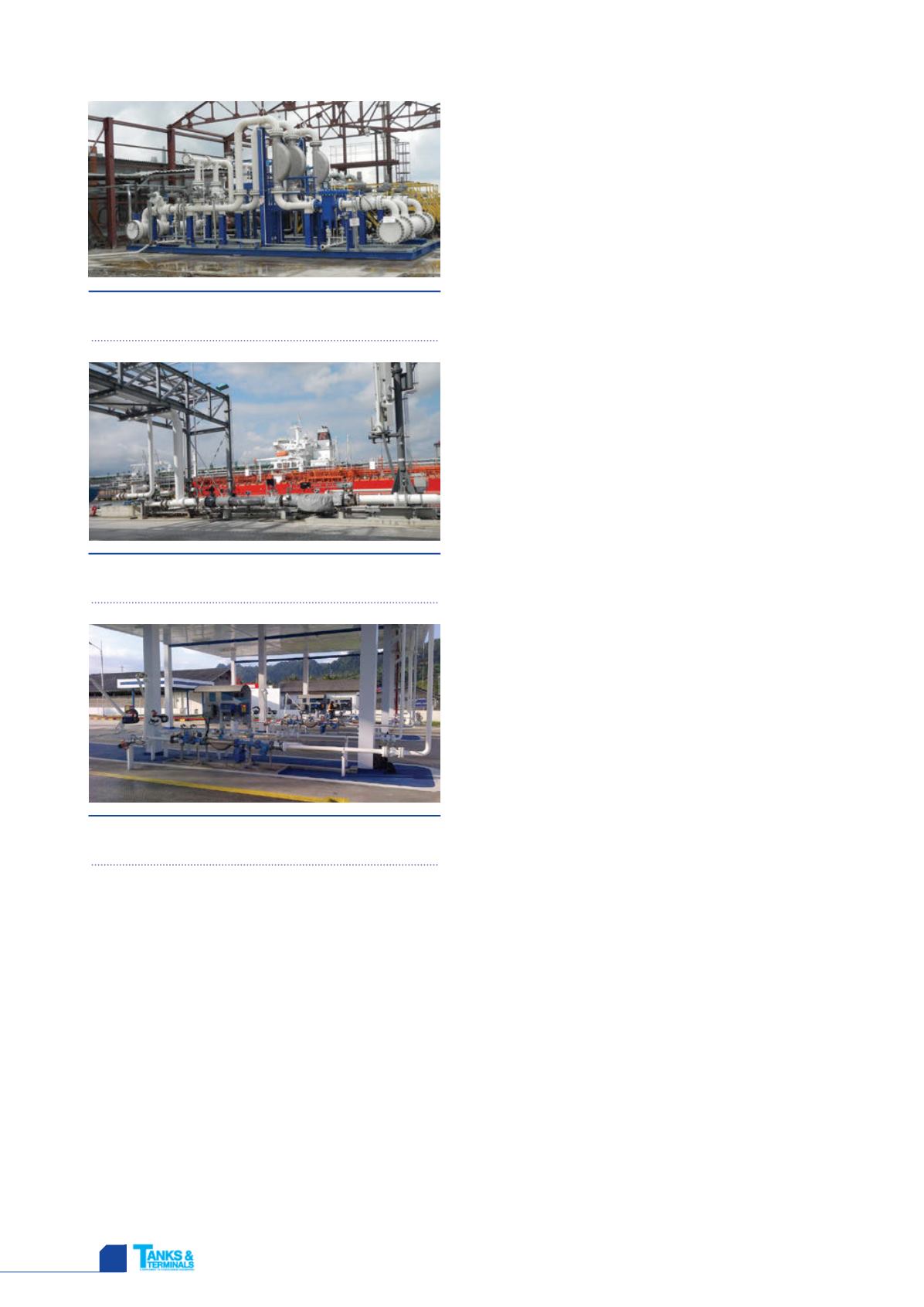
HYDROCARBON
ENGINEERING
54
n
Quality information relating to the fluid is always available
(density and viscosity), which means transparency on the
product and direct standard volume values are available
when required.
n
No upstream and downstream lengths are required,
resulting in a small metering skid footprint.
The newest generation of Endress+Hauser Promass coriolis
mass meters also offer a number of other advantages for
custody transfer systems, such as:
n
Best in class accuracy and high performance.
n
The capability to adapt to different fluid types and
conditions without effect on accuracy, meaning that there
is no need for specific onsite calibration to adapt to the
application.
n
Compact instruments that are easier and cheaper to install.
n
High levels of diagnostics, resulting in preventive
maintenance to avoid unexpected shutdowns.
Figure 5.
Case study 1: ship loading metering system
completed with portable master meter.
Figure 6.
Case study 2: standardised truck loading
metering systems.
Figure 4.
Example of a built customised pipeline
custody transfer metering system.
n
The first four tube, 12 in. coriolis meter available on the market
(availability up to 4100 tph).
n
Designed to be completely independent of environmental
vibrations, resulting in easier installation without the need for
specific supports.
The company’s custody transfer metering system offering
includes both standard and fully customised solutions covering all
possible loading and unloading, blending and proving applications.
Standardised loading metering solutions
The company’s range of ‘plug and play’ modular units start from
basic ‘fit for purpose’ systems and grow into more complex
preconfigured architectures, depending upon the specific project
needs. All are designed to meet OIML-R117 and MI-005 standards,
as well as the API MPMS custody transfer requirements for truck
and railcar loading and unloading. These include LMS080 truck
loading, LMS100 railcar loading, LMS150 railcar loading,
OMS080 truck unloading, OMS100 railcar unloading, LPG080
LPG truck loading and vapour recovery, and modular blending lines.
A set of pre-selectable options are also available, for example: air
eliminators, grounding units, ID card readers and overfill
preventions, for ‘mix and match’ configuration and easy integration
into terminal automation systems.
Alongside the LMS range, customised turnkey systems can be
provided, from FEED engineering up to construction,
commissioning and after sales services, including LACT units,
pipeline metering (Figure 4), jetties systems for ship loading and
offloading, and blending and metering.
Case studies
Ship loading
A private terminal operator, which stocks diesel and heavy oil and
distributes it through ships, focused all its business on the reliability,
transparency, accuracy and operation time of these transactions.
The operator faced the challenge of loading different products
(heavy fuel oil and marine diesel oil) that were handled using the
same pipelines and jetties.
Due to fluid dynamic differences between diesel and heavy
fuel oil, the operator faced problems with achieving the same
performance from the installed mechanical meters and, in addition,
there was little transparency in the quality of the products (no
density information available). The operator found it necessary to
recalibrate the meters frequently, disassembling them from the
jetties and constantly extracting samples to understand which fluid
was being loaded. This resulted in lost time and decreased terminal
performance and quality, which is based substantially on the
number of ships that can be successfully loaded in a day.
Endress+Hauser proposed to replace the nine existing metering
systems, equipped with positive displacement meters, with new
MI-005 (MI-005 part of MIDMeasurment Instruments Directive)
approved metering systems, equipped with Promass X, the largest
coriolis meter available on the market today, which only has four
internal tubes.
As a result of the Promass X’s increased capacity, 100% of the
flow could be handled with only one stream. Furthermore, the
meters provided accurate and direct information related to the
density of the fluid metered, which allowed the operator to obtain
reliable fluid quality information without manual sample extraction
and analysis. The custody standard master meter was mounted on a


